Consider the following reactions :
(I)Me−≡(A)−MeH2+−−−−−−→Pd+BaSO4?(B)D2/Pd/C−−−−−−→(C)
(II)Me−≡(A)−MeNa+Liq.NH3−−−−−−−−→+EtOH?(D)D2/Pt/C−−−−−→(E)
Which of the following statements are correct ?
(B) is cis-but-2-ene and (D) is trans-but-2-ene.
(B) is trans-but-2-ene and (D) is cis-but-2-ene.
(c) is meso form and (E) is racemic form.
(C) is racemic form and (E) is meso form.
The correct Answer is:A, C
To solve the given reactions and identify the products, let's break down the steps systematically.
Step 1: Identify the Structure of Compound A
The compound A is represented as Me−≡(A)−Me. This indicates that A is but-2-yne, which can be written as:
\( \text{CH}_3\text{C} \equiv \text{CCH}_3 \)
Step 2: Reaction of A with H2 and Pd/BaSO4
The first reaction involves the reduction of but-2-yne (A) using hydrogen gas (H2) in the presence of palladium (Pd) and barium sulfate (BaSO4). This setup is known as Lindlar's catalyst, which selectively hydrogenates alkynes to cis-alkenes.
- Product B: The product formed from this reaction is cis-but-2-ene:
\( \text{B} = \text{cis-CH}_3\text{C}=\text{CCH}_3 \)
Step 3: Reaction of B with D2 and Pd/C
Next, we consider the reaction of product B with deuterium gas (D2) in the presence of palladium on carbon (Pd/C). This reaction leads to the formation of a meso compound because the addition of D2 occurs in a symmetrical manner.
- Product C: The product formed is a meso compound:
\( \text{C} = \text{meso-2,3-dideuterobutane} \)
Step 4: Identify the Structure of Compound D
Now, we analyze the second reaction where compound A (but-2-yne) is treated with sodium (Na) in liquid ammonia (NH3) and ethanol (EtOH). This is known as Birch reduction, which converts alkynes to trans-alkenes.
- Product D: The product formed from this reaction is trans-but-2-ene:
\( \text{D} = \text{trans-CH}_3\text{C}=\text{CCH}_3 \)
Step 5: Reaction of D with D2 and Pt/C
Finally, we look at the reaction of product D with D2 in the presence of platinum on carbon (Pt/C). This reaction will lead to the formation of a racemic mixture because the addition of D2 occurs in a non-symmetrical manner.
- Product E: The product formed is a racemic mixture of 2,3-dideuterobutane:
\( \text{E} = \text{racemic-2,3-dideuterobutane} \)
Summary of Products
- B: cis-but-2-ene
- C: meso-2,3-dideuterobutane
- D: trans-but-2-ene
- E: racemic-2,3-dideuterobutane
Conclusion
Based on the products identified:
- B is cis-but-2-ene (correct)
- D is trans-but-2-ene (correct)
- C is a meso compound (correct)
- E is a racemic mixture (correct)
The compound A is represented as Me−≡(A)−Me. This indicates that A is but-2-yne, which can be written as:
\( \text{CH}_3\text{C} \equiv \text{CCH}_3 \)
The first reaction involves the reduction of but-2-yne (A) using hydrogen gas (H2) in the presence of palladium (Pd) and barium sulfate (BaSO4). This setup is known as Lindlar's catalyst, which selectively hydrogenates alkynes to cis-alkenes.
\( \text{B} = \text{cis-CH}_3\text{C}=\text{CCH}_3 \)
Next, we consider the reaction of product B with deuterium gas (D2) in the presence of palladium on carbon (Pd/C). This reaction leads to the formation of a meso compound because the addition of D2 occurs in a symmetrical manner.
\( \text{C} = \text{meso-2,3-dideuterobutane} \)
Now, we analyze the second reaction where compound A (but-2-yne) is treated with sodium (Na) in liquid ammonia (NH3) and ethanol (EtOH). This is known as Birch reduction, which converts alkynes to trans-alkenes.
\( \text{D} = \text{trans-CH}_3\text{C}=\text{CCH}_3 \)
Finally, we look at the reaction of product D with D2 in the presence of platinum on carbon (Pt/C). This reaction will lead to the formation of a racemic mixture because the addition of D2 occurs in a non-symmetrical manner.
\( \text{E} = \text{racemic-2,3-dideuterobutane} \)
- B: cis-but-2-ene
- C: meso-2,3-dideuterobutane
- D: trans-but-2-ene
- E: racemic-2,3-dideuterobutane
Based on the products identified:
- B is cis-but-2-ene (correct)
- D is trans-but-2-ene (correct)
- C is a meso compound (correct)
- E is a racemic mixture (correct)
Topper's Solved these Questions
- ORGANIC REACTION MECHANISMBOOK - CENGAGE CHEMISTRY ENGLISHCHAPTER - ORGANIC REACTION MECHANISMEXERCISE - Single correct
43 Videos
- ORGANIC REACTION MECHANISMBOOK - CENGAGE CHEMISTRY ENGLISHCHAPTER - ORGANIC REACTION MECHANISMEXERCISE - Assertion-Reasoning
12 Videos
- ORGANIC REACTION MECHANISMBOOK - CENGAGE CHEMISTRY ENGLISHCHAPTER - ORGANIC REACTION MECHANISMEXERCISE - Comprehension
35 Videos
- NCERT BASED EXERCISEBOOK - CENGAGE CHEMISTRY ENGLISHCHAPTER - NCERT BASED EXERCISEEXERCISE - Chemical Equilibrium
73 Videos
- P-BLOCK GROUP 13 - BORON FAMILYBOOK - CENGAGE CHEMISTRY ENGLISHCHAPTER - P-BLOCK GROUP 13 - BORON FAMILYEXERCISE - Exercise Archives (Subjecive)
9 Videos
Similar Questions
EtCOCl(A)(i)H2N.OH−−−−−−−→(ii)ӨOH(B)EtOH−−−→(C)
Which of the following statements are correct about the given reaction ?
View SolutionConsider the following reactions :
IMe−≡(A)−MeNa+Liq.NH3−−−−−−−−→EtOH(B)
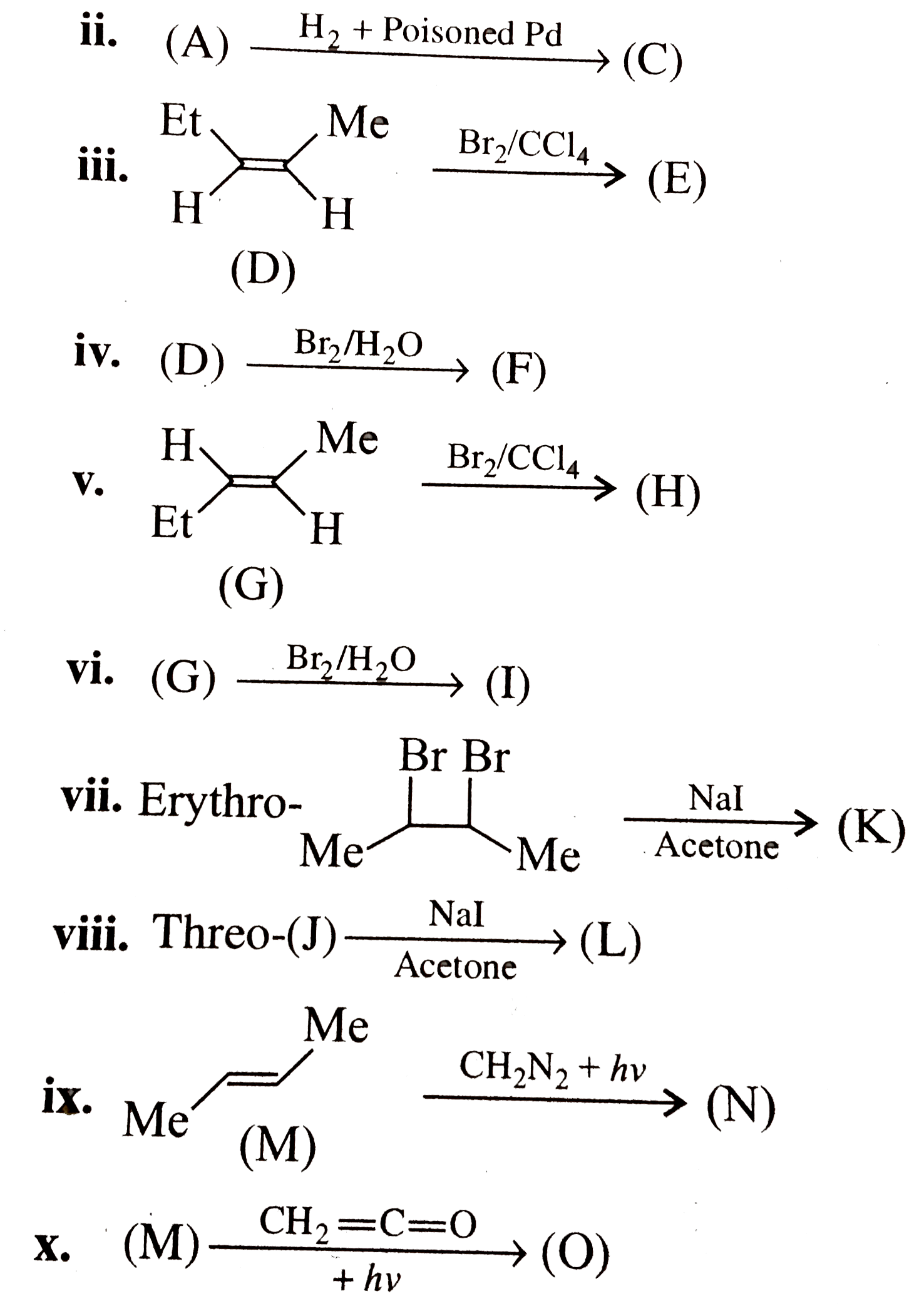 .
.
Which statement is wrong about the reaction (v) and (vi) ?
View SolutionConsider the following reactions :
IMe−≡(A)−MeNa+Liq.NH3−−−−−−−−→EtOH(B)
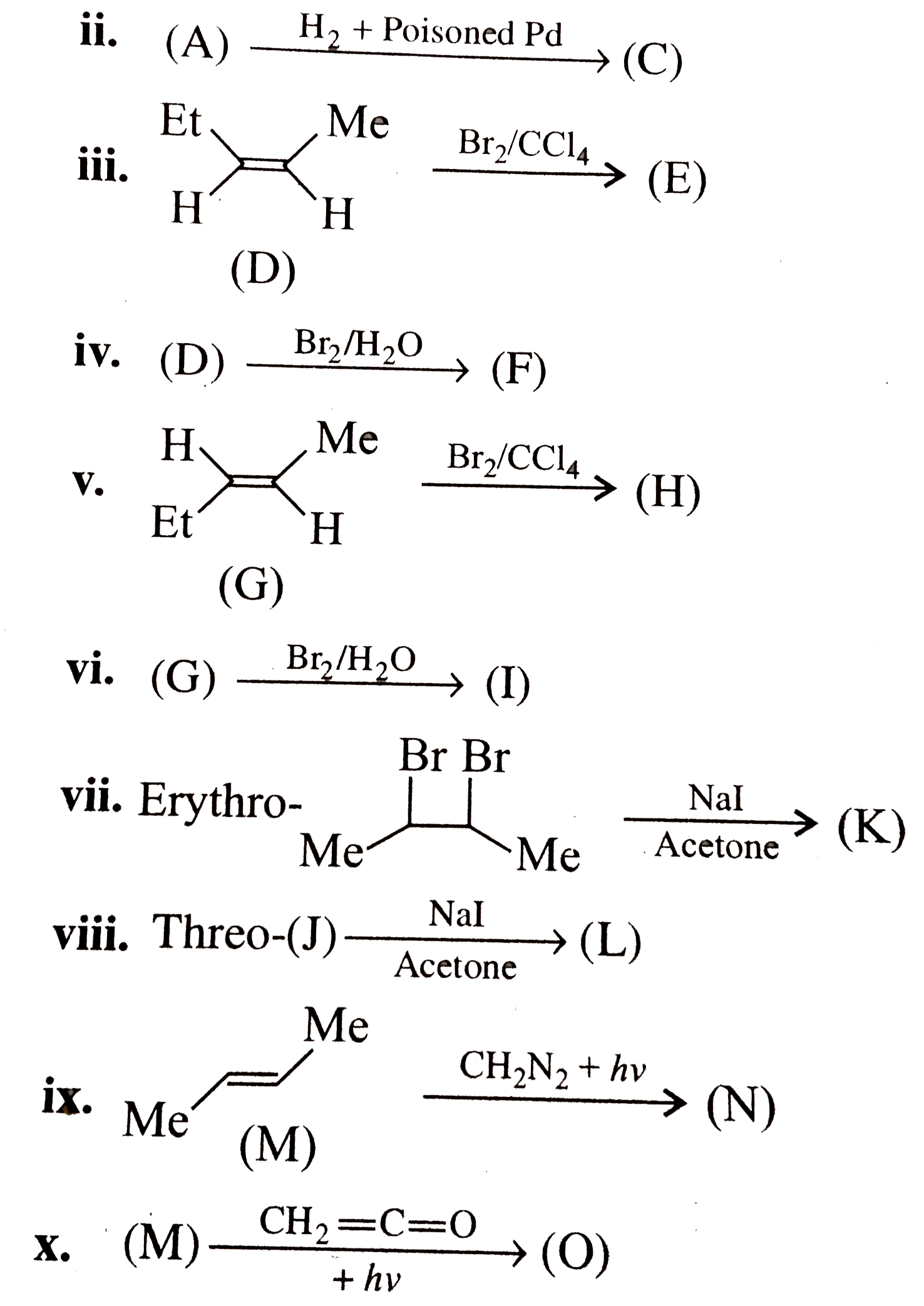 .
.
Which statement is wrong about the reactions (i) and (ii) ?
View SolutionConsider the following reactions :
IMe−≡(A)−MeNa+Liq.NH3−−−−−−−−→EtOH(B)
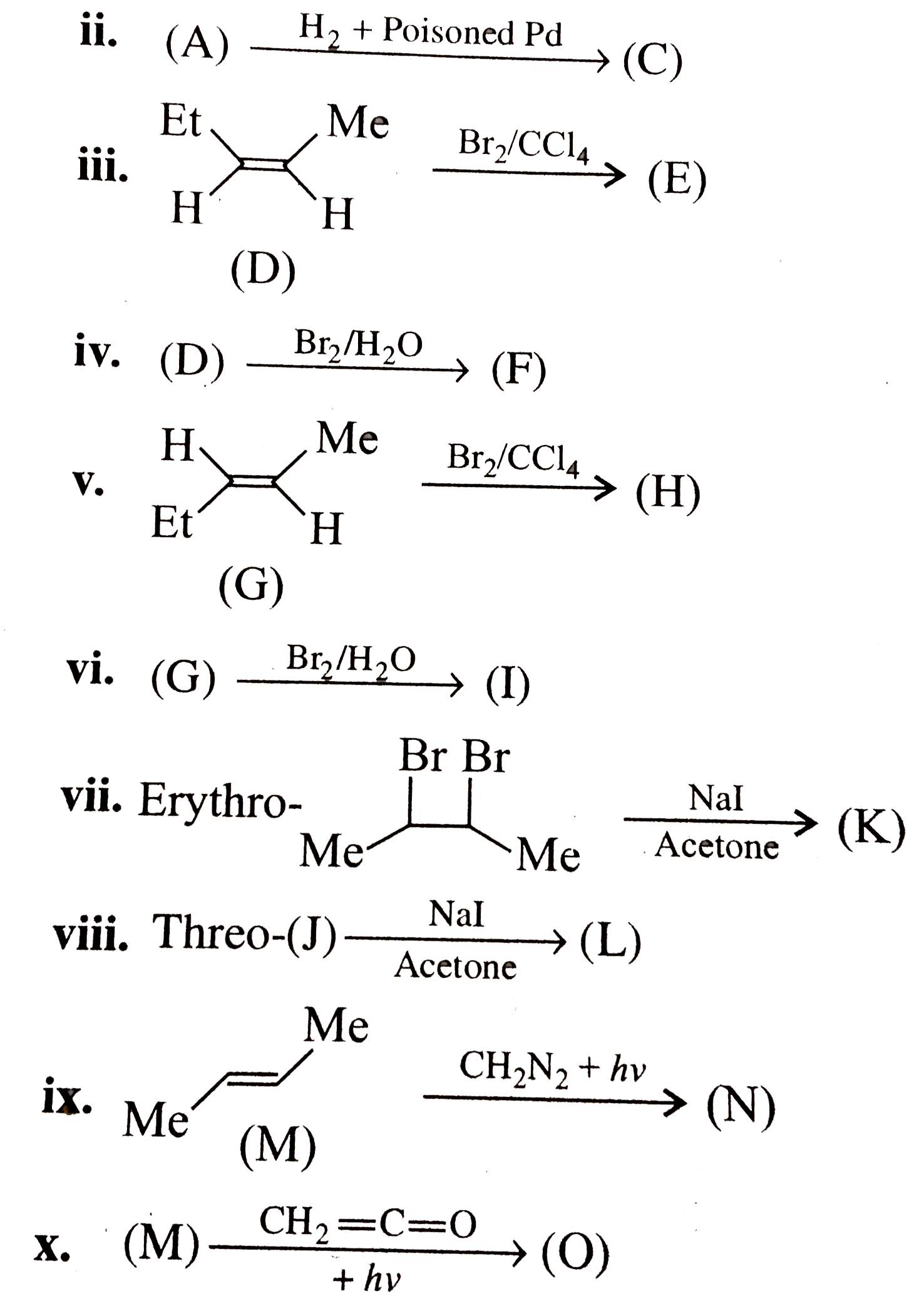 .
.
Which statement is wrong about the reactions (iii) and (iv) ?
View SolutionConsider the following reactions :
IMe−≡(A)−MeNa+Liq.NH3−−−−−−−−→EtOH(B)
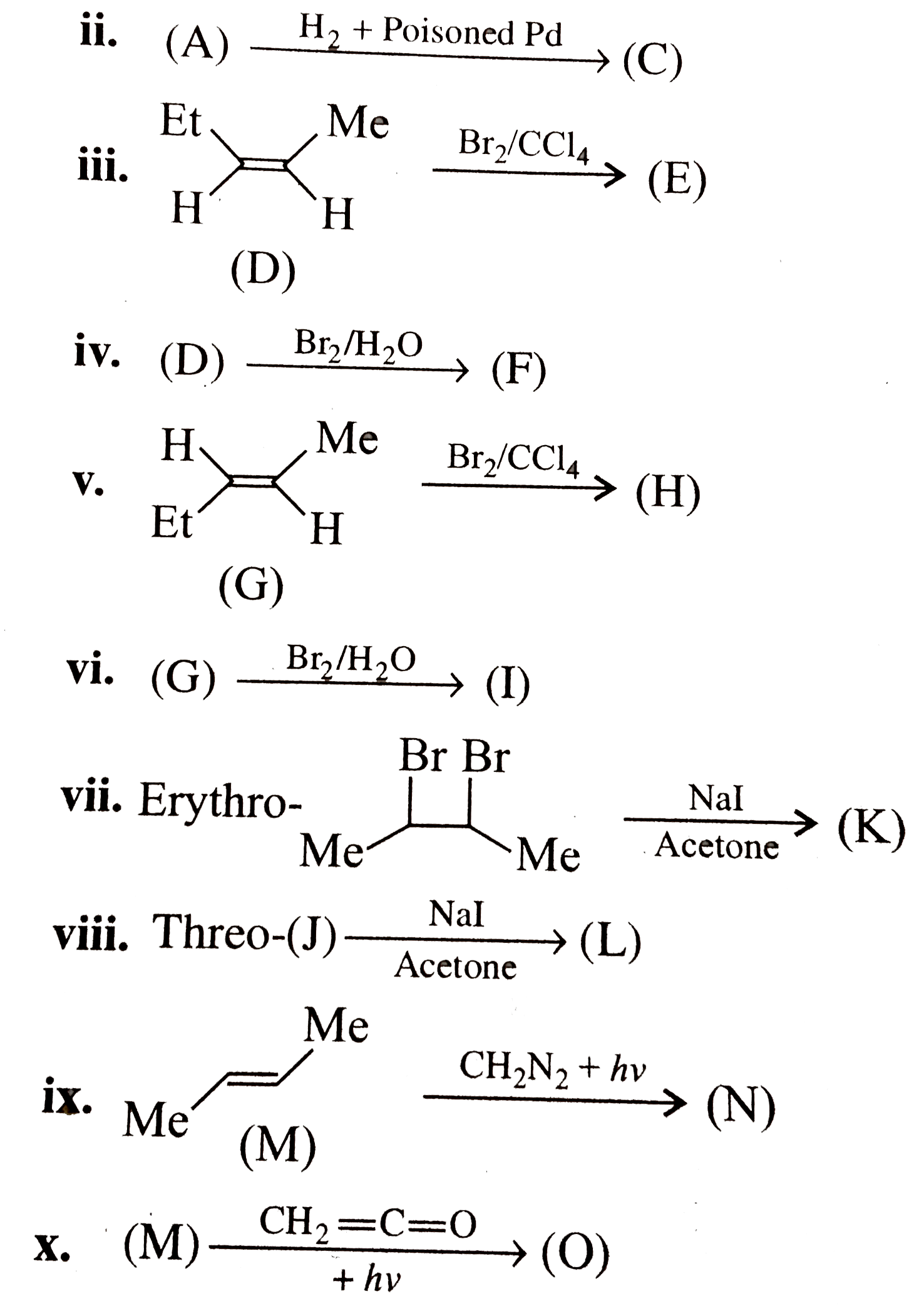 .
.
Which statement is wrong about the reactions (ix) and (x) ?
View SolutionComplete the following reactions:
2Me3C−−Br Ag2CO3−−−−→Δ (A)
View SolutionConsider the following reactions :
IMe−≡(A)−MeNa+Liq.NH3−−−−−−−−→EtOH(B)
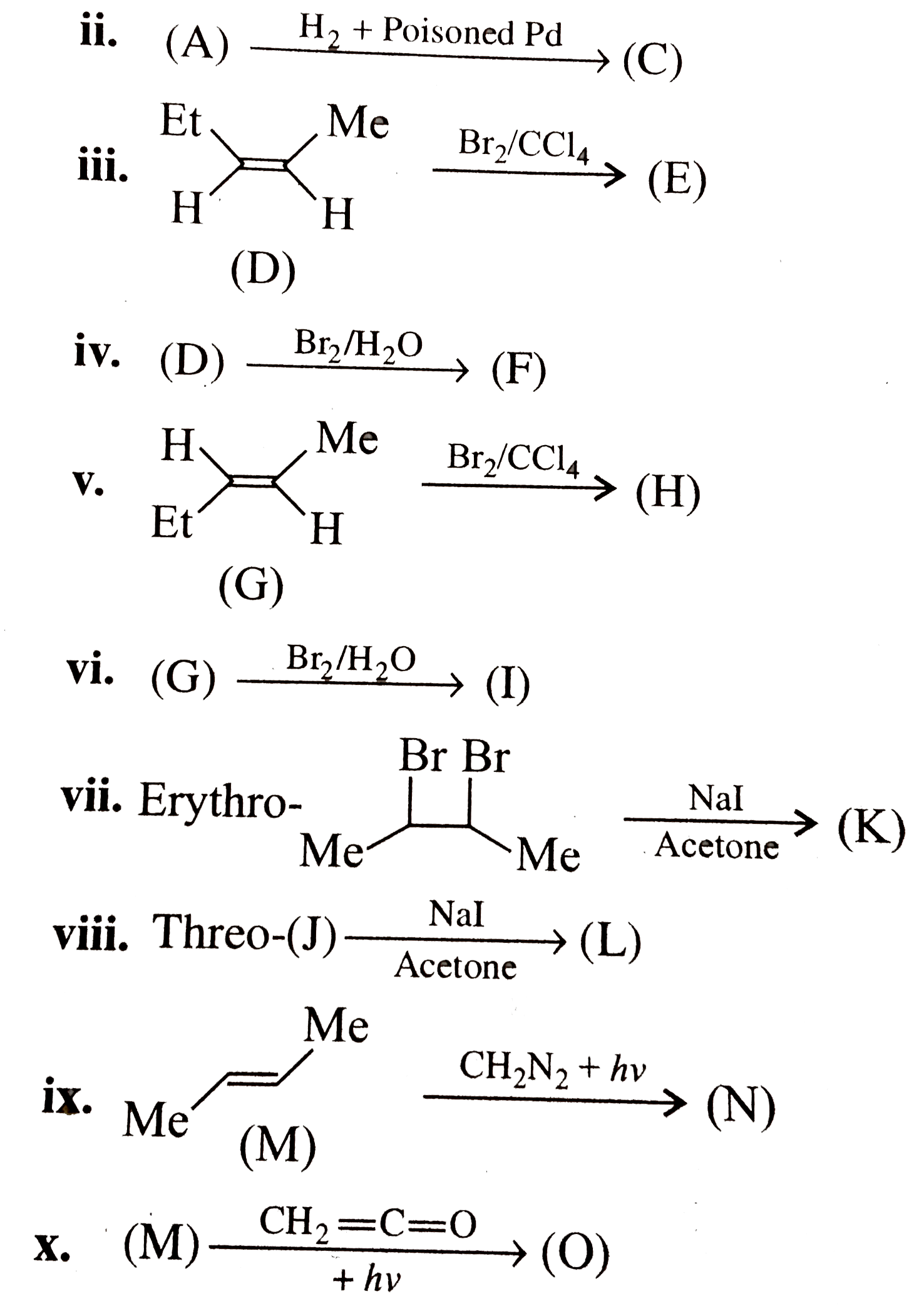 .
.
Which statement is wrong about the reactions (vii) and (viii) ?
View SolutionComplete the following reactions:
Benzene(A) Ac2O−−−−→+AICI3 (B) (i)MeMgBr−−−−−−−→(ii)H3O(+) (C) Conc.H2SO4 (D) 1.BH3/THF−−−−−−−−−−→2.H2O2/O(−)H (E)
View SolutionC3H2=2C=1CH2Propa-1,2-diene(A)NaNH2+Liq.NH3−−−−−−−−−−−→(B)
Which of the following statements is / are correct ?
View Solutioncomplete the following reactions:
a. C6H6+MeCOCIBenze≠(A) AICI3−−−→ B HNO3––––––H(2)SO4)→ C NaBH4−−−−→ D H2SO4−−−→Δ E
View Solution
